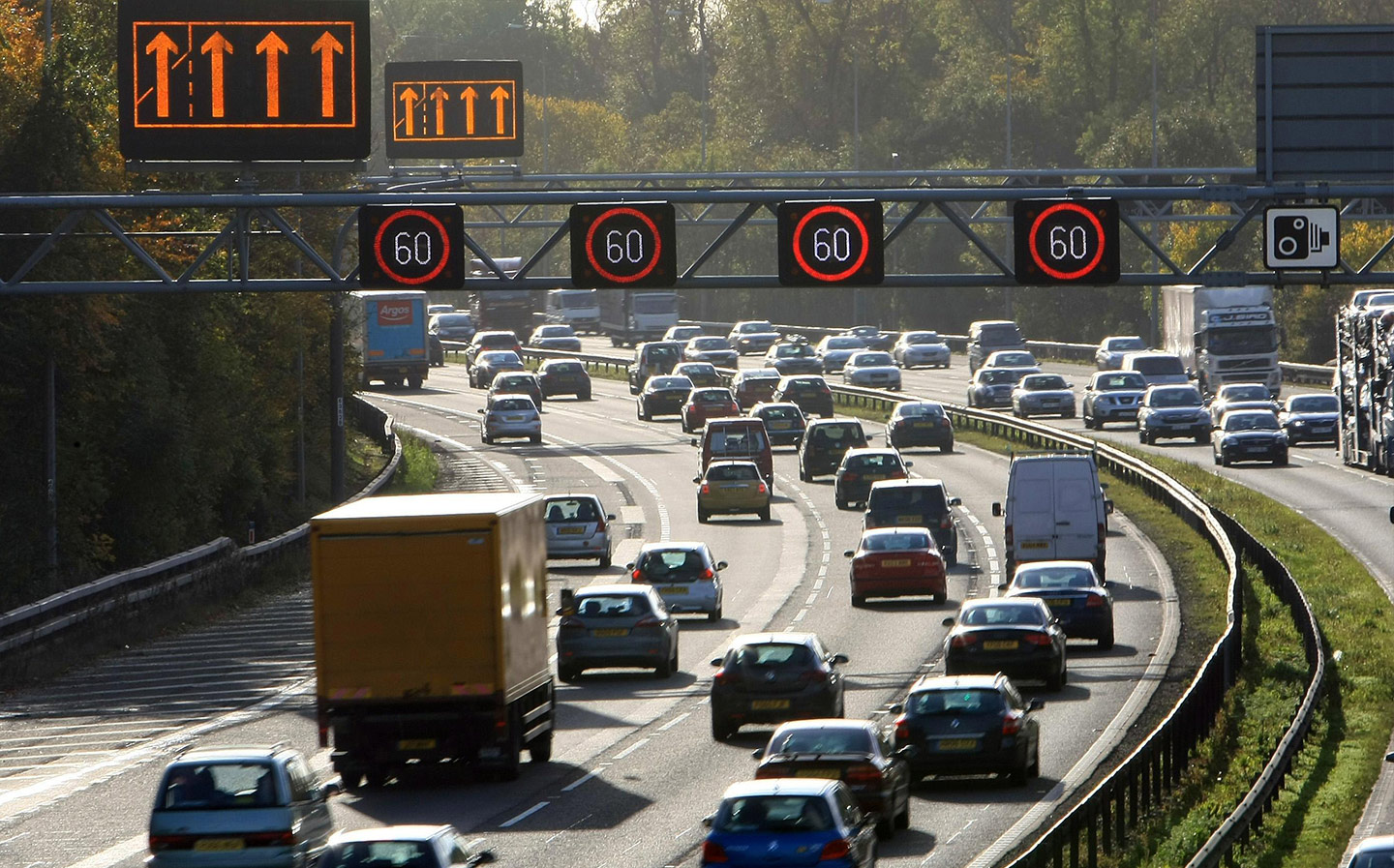Smart motorway roadworks speed limit to increase from 50mph to 60mph
Raft of changes the beginning of the end for hard shoulders?
THE SPEED limit through smart motorway roadworks will be increased from 50mph to 60mph as part of a number of updates planned by Highways England.
The higher speed was found to improve levels of speed compliance and driver behaviour with “no indication that an increase in speed to 60mph has a negative impact on safety”.
The changes will also see smart motorways — to be rebranded as “digital roads”, according to The Times —almost double in length from 416 miles to 788 miles by April 2025, resulting in the loss of nearly 400 miles of hard shoulder.
On smart motorways the hard shoulder is removed to create an extra lane, with cars having to stop in emergency lay-bys if they break down. The changes will see these refuge areas moved closer together, with gaps between of one mile rather than 1.5 miles.
Variable speed limits are used to regulate traffic and lanes are shut using red Xs on overhead signs to signal accidents or broken-down vehicles in the road ahead. The system is used on motorways including the M1, M4, M6, M25 and M62.

Highways England said the changes are based on the results of extensive trials, and will improve traffic flow and road safety. Hard shoulders were branded “unsafe” by the organisation, whereas regular refuge areas allow cars to pull off the road completely.
Highways England’s chief executive Jim O’Sullivan said that one in ten motorway fatalities took place on the hard shoulder, usually due to vehicles hitting stationary cars from behind.
“With the volume, speed and size of modern cars, the refuge areas are safer than the hard shoulder,” he said. “You will not get a car or lorry drifting into the emergency refuge area whereas they can and they do into the hard shoulder.
“We are now well into smart motorway operation and the statistics we have are reliable. They are telling us that the safety record on smart motorways is arguably better than what we see on conventional motorways.”
While a February 2018 study on a stretch of M25 between junction five and junction seven concluded the smart motorway scheme there had “exceeded its safety objective”, some motoring groups have criticised the decision to scrap more miles of hard shoulder entirely.
In March 2019, the AA expressed “serious concerns” over the decision, after an 83-year-old motorist was killed in a car crash after stopping on a section of the M1 motorway that didn’t have a hard shoulder lane.
Tweet to @J_S_Allen Follow @J_S_Allen





